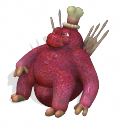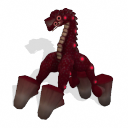
plausible/possible (if the creature is plausible in anatomy, though it is not based off any real creature).

real/realistic (if the creature is based off an actual Earth animal).In an effort to make searches easier, the Spore community is currently in the process of standardizing useful tags to include on a creature. There are also special tags that can be put on your creature, such as the " gaprop" tag, and the archetypes listed on this page: īy inserting the tags on the Spore Archetypes page, you could set your creatures (for Tribal and Creature stages) to spawn as something more specific as long as they follow the criteria of those archetypes. "under the bed") rather, it searches individual words (the query "under the bed" would return all creatures with "under," "the," and "bed" in the tags, name, and description). Note when tagging that currently the Sporepedia search function cannot search for phrases (i.e. As such, it is important to include relevant tags so that creatures can be properly identified. However, it is expected users will be able to set their game to filter imported creatures by checking for specific tags.
SPOREPEDIA 2 FULL
Prior to the release of the full Spore game, tagging only affects Sporepedia searches. Only the name is mandatory for the creature to be saved. When a creature is created, it can be given a name, a description, and tags which should be separated by a comma. In addition, tags are expected to play a major role in the full Spore game's filtering process. Thoughtful tagging makes searches more productive for the entire community. Shows information about an adventure, including up to four pictures, a description imposed on the center of the picture gallery, tags, and players who beaten the adventure ("Adventure Leaders").Ī tag is a descriptor added to a creature to help differentiate it in searches on the Sporepedia. Shows an image of the building, and what type it is. Shows information about a vehicle, such as health, strength and speed in a percentage bar in the upper corner of the card, and what type it is. Or if you, the player, have found out about the flora editor, you can make your own flora and it will appear in the Sporepedia! Plants can only be downloaded into the in-game database through scanning, which is a technology that can only be obtained during the space stage. Once you have a creature in the Sporepedia, you can duplicate/edit it in the creature editor. Captains that the player uses in adventures also show the level of the captain, and a separate window that appears when clicked showing the gameplay stats of the captain. Other outfitted creatures show no stats, except for captains, who show the basic creature stats in addition to four new stats, shielding abilities, energy maximum and regeneration, and health regeneration. Tribal creatures show a modified stats list including gathering, combat, social, speed, and health levels. The shown stats vary depending on if it is an un-outfitted creature, a tribal outfitted creature, a civilization or space outfitted creature, or a captain. There are also stats for attack abilities, social abilities, general abilities such as sight and gliding, along with speed and health levels. There is an image for its diet, whether carnivore (Piece of chicken with a bite out of it), herbivore (An apple with a bite out of it), or omnivore. The information shown are icons to represent the stats being imaged and numbers next to the icon to show the level of the abilities. Searching for an empire will also show all planets in systems they own. In the place on the card where the creator's name usually is, the name of the star can be seen. Pressing this button will put a tracking marker on the planet and its star. There is a button in the corner that looks like a compass.

Clicking on the three dotted button below the planet's image reveals a 3-D rotating image of the planet. For example, it is possible to list all planets you have encountered, or all the creatures in the database. This is the top card, which does not hold any information by itself, but provides access to all the content currently in your database. There are several types of cards, each representing a different kind of content. Plants and animals can also be added to the Sporepedia via the Abduction Beam. In the Space Stage, a technology called Scan must be used to gain the Sporepedia information on all content except planets, which are added to the Sporepedia as soon as you enter them.

In the first 4 stages, you can obtain cards by simply clicking on the content.


 0 kommentar(er)
0 kommentar(er)
